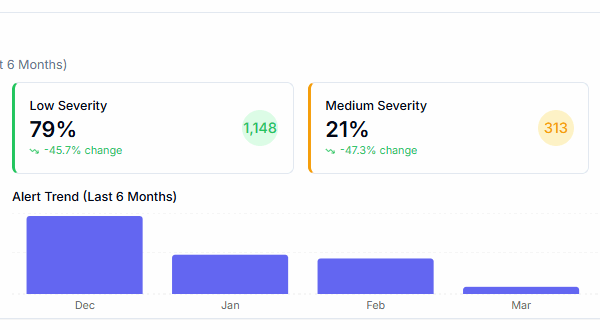
Cryptographic Inventory: The Key to Quantum-Ready Security
Introduction
In an era where cyber threats are evolving at an unprecedented pace, understanding and managing cryptographic assets have become crucial for organizations aiming to secure their digital infrastructure. As we edge closer to the advent of quantum computing, the need for a comprehensive cryptographic inventory has never been more pressing. This article explores the significance of cryptographic inventory in achieving quantum-ready security, drawing insights from Qryptocyber and NSM-10.
The Quantum Computing Threat
Quantum computing promises to revolutionize various fields with its immense processing power. However, this power poses a significant threat to current cryptographic methods. Traditional encryption algorithms, such as RSA and ECC, which underpin much of today’s cybersecurity, could be rendered obsolete by quantum computers. These machines can solve complex mathematical problems exponentially faster than classical computers, making it possible to crack these encryption schemes in a fraction of the time.
The National Security Memorandum 10 (NSM-10) emphasizes the urgent need for organizations to transition to quantum-resistant cryptography. This transition involves not just the adoption of new algorithms but also a thorough understanding and management of existing cryptographic assets, which is where cryptographic inventory comes into play.
What is Cryptographic Inventory?
Cryptographic inventory refers to the process of identifying, cataloging, and managing all cryptographic assets within an organization. These assets include cryptographic algorithms, keys, certificates, protocols, and hardware security modules (HSMs). A well-maintained cryptographic inventory provides a clear view of the cryptographic landscape, ensuring that all components are accounted for and properly managed.
A robust cryptographic inventory is foundational for any organization aiming to achieve quantum-ready security. It helps in identifying vulnerabilities, ensuring compliance with regulations, and planning for the transition to quantum-resistant cryptography.
The Importance of Cryptographic Inventory
1. Identifying Vulnerabilities
A comprehensive cryptographic inventory allows organizations to identify weaknesses in their current cryptographic implementations. By cataloging all cryptographic assets, security teams can pinpoint outdated or weak algorithms that need to be replaced. This proactive approach helps in mitigating risks associated with potential quantum attacks.
2. Ensuring Compliance
Regulatory bodies are increasingly mandating stringent security measures to protect sensitive data. A cryptographic inventory ensures that organizations are in compliance with these regulations. It provides an auditable trail of cryptographic assets, demonstrating due diligence in managing and protecting cryptographic resources.
3. Streamlining the Transition to Quantum-Resistant Cryptography
Transitioning to quantum-resistant cryptography is a complex process that involves updating or replacing existing cryptographic algorithms. A detailed cryptographic inventory simplifies this process by providing a clear map of all cryptographic assets. This clarity enables organizations to plan and execute the transition efficiently, minimizing disruptions to operations.
QryptoCyber’s Approach to Cryptographic Inventory
QryptoCyber offers a comprehensive solution for managing cryptographic inventory, designed to help organizations navigate the challenges of quantum-readiness. Their approach involves three key steps:
1. Discovery
The first step in building a cryptographic inventory is the discovery phase. QryptoCyber’s tools automatically scan the organization’s digital environment to identify all cryptographic assets. This includes not only software-based assets but also hardware components like HSMs.
2. Cataloging
Once all assets are identified, the next step is cataloging. This involves creating a detailed inventory that includes information about each asset’s type, purpose, and status. QryptoCyber’s platform provides an intuitive interface for managing this information, making it easy to keep the inventory up-to-date.
3. Management and Monitoring
The final step is ongoing management and monitoring. Cryptographic inventory is not a one-time task but an ongoing process. QryptoCyber’s solution includes tools for continuous monitoring of cryptographic assets, ensuring that any changes or updates are promptly recorded. This proactive management helps in maintaining a robust security posture.
NSM-10 and the Path to Quantum-Ready Security
The National Security Memorandum 10 (NSM-10) underscores the critical need for organizations to prepare for quantum computing threats. It outlines a strategic approach to achieving quantum-ready security, with cryptographic inventory being a key component. NSM-10 advocates for a phased transition to quantum-resistant cryptography, starting with the identification and management of current cryptographic assets.
By following the guidelines set forth in NSM-10 and leveraging tools like those provided by QryptoCyber, organizations can ensure they are well-prepared for the quantum era. A well-maintained cryptographic inventory not only enhances current security but also lays the foundation for a smooth transition to future-proof cryptographic methods.
Conclusion
In conclusion, understanding and managing cryptographic inventory is essential for any organization aiming to achieve quantum-ready security. With the impending threats posed by quantum computing, the importance of a comprehensive cryptographic inventory cannot be overstated. By identifying vulnerabilities, ensuring compliance, and streamlining the transition to quantum-resistant cryptography, a well-maintained cryptographic inventory serves as a cornerstone of modern cybersecurity. Leveraging solutions from QryptoCyber and adhering to the guidelines of NSM-10, organizations can navigate the challenges of the quantum era with confidence and resilience.







